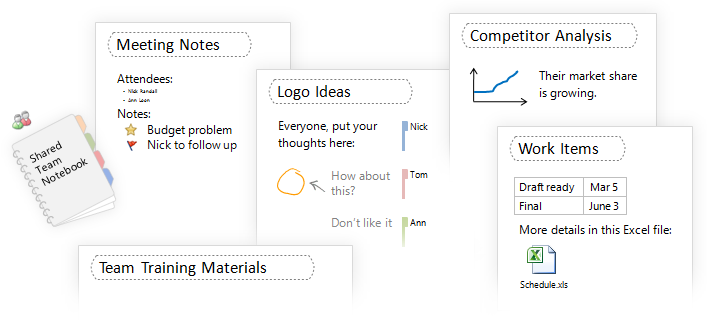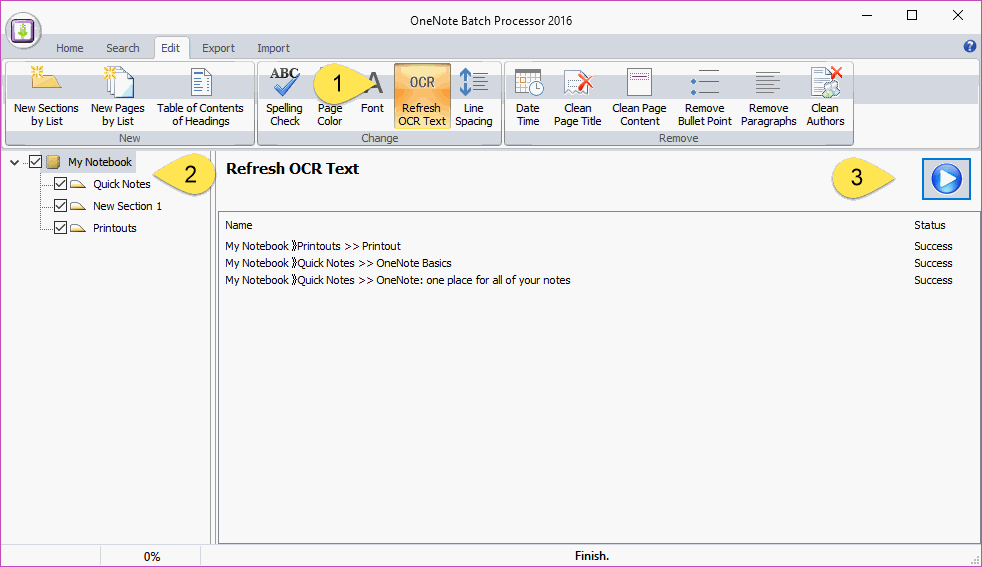

He has managed both hardware and software implementations for both the government and private sectors, in industries such as healthcare, insurance, telecommunications, staff augmentation, supply chain and shipping. Management Professional, from the Management and Strategy Institute as a Six Sigma Lean Professional, and he holds a Scrum Master Certification from the Scrum Alliance. He has been a project manager for almost 20 years holding certifications from the Project Management Institute as a Project Jeff comes to KTL Solutions with an extensive background in healthcare IT, technical consulting, and telecommunications. If you have any ideas, or practical applications of OneNote, I’d love to hear them. What goes into this section is totally up to you. As mentioned earlier, I put web links, Excel spreadsheets, (they can just be “stuck” on a page, screen shots, (it has its own screen tool), even audio and video. It can almost act as a scrapbook at this point look at the Insert tab above. Now that your notebook is created with projects centralized, you can start getting into the power user functions of OneNote. Just click on it and you only see the tasks for that project, not an unfiltered, lengthy list. It’s pretty intuitive so you can almost immediately start seeing the benefits of the setup. So with this setup in OneNote, all of your projects will be tabs listed at the top, and the pages at the right are the tasks. OneNote then does the heavy lifting just tell it where you want the task sent. Just highlight it, then click the OneNote icon. The source of the task is irrelevant: your boss, a client, the project manager, even your significant other, (I have several OneNote notebooks that cover many aspects of my “to-do” lists). This is a nice visual approach to project management, (I’ll discuss this in a minute). As new projects come in, I just add a new tab. Inside this notebook, you can create as many tabs as you want I typically name them to match my projects. OneNote fixes this by creating a notebook structure. Category is placed in a single column, as is due date, but these are just for sorting purposes. You see a long list, sorted alphabetically, not an easy search.

But you can’t visually sort them as easily. If you look at your tasks in Outlook, you will notice tasks tend to fall into a project-type organizational structure. Open OneNote and create a new Notebook labeled Task Management. OneNote icons will now appear all over Outlook. Select the checkbox next to this, and then click OK.
#Onenote add ins tasks free
If you have OneNote installed on your computer – it’s free by the way – then you’ll see an Add-In here titled OneNote Notes about Outlook Items. COM Add-ins should be selected, then click Go. To do this from within Outlook, just clickĪt the bottom of this page you’ll see a Manage field with a dropdown box. OneNote does this fantastically, and it plays nice with Outlook, (thank you Microsoft). A Trapper Keeper for adults, so to speak.

After using OneNote, it dawned on me: this is that three-ring notebook I had as a kid where I kept everything. From a project perspective, I often had several spreadsheets, documents, emails, web links, and notes I had to put in my notes. BUT…that is pretty much it.Įven though this seems like quite a bit, it frustrated me at times with its limitations and I was constantly doing workarounds. Put a due date on it, categorize it, you can even turn an email into a task. It’s a great way to make sure you don’t get sidetracked and to just get stuff done. It also gave me a good way to manage high-level project tasks without MS Project. I’ve used Tasks in Microsoft Outlook for many years. Which is why I created categories, search folders, and tasks (this last one is very important). As a Project Manager, I have always pushed additional functionality in Outlook. Outlook was in wide use at this company, but only for email and calendars.

I started poking around a little and noticed the add-in to Outlook. While at this company, I always felt there was a better way to use OneNote. It was used by everybody and everybody felt it was a chore to use. This company fell under Sarbanes-Oxley rules, and as such everything was in the public domain: meeting notes, invites, emails, everything. My first experience working with OneNote was about 5 years ago at a large corporation.


 0 kommentar(er)
0 kommentar(er)
